AOKP Jelly Bean MR1 Build 1 available
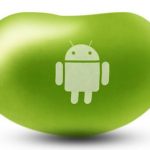
Little more than three months since the last build, breaking away from the previous Sunday release schedule, the team behind Android Open Kang Project (AOKP) unveiled Jelly Bean MR1 Build 1. The latest build represents the first official release based on Android 4.2, sporting most of the custom distribution's traditional features.
The work on Android 4.2-based builds started from scratch after Google released the latest green droid operating system, a "tough decision" according to the team behind AOKP. At the moment, Jelly Bean MR1 Build 1 delivers most of the previously known features such as widely customizable navigation bar, including buttons, color or widgets to name a few, custom vibrations, LED Control, lockscreen targets, Quiet Hours and advanced sound settings, among others. However, there are some new features included as well.
My tech life completely changed in 2012

I join colleagues Mihaita Bamburic, Alan Buckingham and Wayne Williams recounting what tech I used in 2012. But unlike them, I made dramatic platform changes, more significant than first using Windows over New Years holiday 1994, buying a reburbished PowerBook in February 1999, adopting Facebook and Twitter in 2006 or purchasing Nexus One in January 2010. Each of these marked major platform changes -- and some not always lasting. Consider this: in early 2012, I owned a 1.8GHz Intel Core i7 MacBook Air, iPhone 4S and iPad 3. I end the year using Chromebook and Android smartphone and tablets.
During the year I moved from OS X and Windows running on Intel to an ARM-and-Chrome OS laptop, and after several failed attempts at adopting tablets (three generations of iPads, really), I embraced not one but two Android slates. I store all my data in the cloud -- local storage is now merely a way station between destinations rather than personal repository. This old dog is learning new tricks, and if I make such dramatic platform changes what does that mean for younger users who are more flexible and not as financially or habitually Apple/Microsoft/Intel committed? Look around, the PC era rapidly evaporates around you and its disappearance will be difficult to ignore in 2013.
A third of Android devices now run Ice Cream Sandwich and Jelly Bean
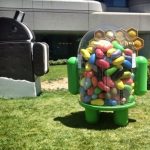
Jelly Bean may be the youngest member of the Android family, but it’s also enjoying some amazing month-on-month growth, based on the number of devices accessing Google Play during the 14 days ending December 3. It still has some way to go to match Gingerbread though, which is yet again the green droid ruler.
On November 13, the search giant introduced its latest sugary treat, Android 4.2. Three weeks later, the new version of Jelly Bean had claimed a distribution level of 0.8 percent, a number aided by Nexus 4 and Nexus 10 sales, and Galaxy Nexus and Nexus 7 upgrades. That growth however, pales in comparison to 4.1 Jelly Bean which is now found on 5.9 percent of green droid devices, an increase of 118 percent when compared to the previous figures released in early November.
Google posts Android 4.2.1 factory images for the Nexus 4, 7, 10 and HSPA+ Galaxy smartphone

Just three days ago Google released the Android 4.2.1 Jelly Bean update which now recognizes that December and Santa Claus do exist. Today the Mountain View, Calif.-based corporation updated the factory images for the Nexus 4, 7, 10 and HSPA+ Galaxy Nexus with the latest version of the green droid operating system.
Using the factory images the four Nexus devices can be directly upgraded to Android 4.2.1 Jelly Bean, build number JOP40D, without waiting to receive the over-the-air update. In similar fashion, green droid modders can take advantage of the factory images to restore the devices to stock after previously using a custom distribution such as AOKP Jelly Bean Milestone 1 or CyanogenMod 10.
I bought iPad 2 for Nexus 7 money

I'm not wrong -- tablets are still incapable of replacing PCs, but I purchased one anyway. Local Black Friday sales got the best of me, and the end result is the iPad 2 that's laying on my couch right now. Before you start calling me names for buying an older product or "betraying the Android army", let me put it like this -- Apple's tablet was cheaper than a Google Nexus 7.
Price is a very strong incentive in any of my buying decisions. Because of it I couldn't even think about purchasing an iPad, as it normally runs for $550 in my area. But that changed when I read the price tag during the Black Friday sale -- it was roughly $285. Suddenly priorities changed and an older, otherwise overpriced, product made sense. I just had to get it, despite what logic may have tried to dictate at the time.
Tired of hitting the F5 key? There's an easier way to check Google Nexus availability
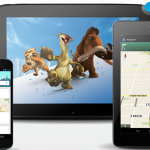
Google's attempt to sell the Nexus lineup on its own Play Store could be considered a failure. The company appears to be unable to keep up with the high demand, and as a result devices are mostly sold out all over the world. In order to prepare for that one moment when sufficient stock exists there is a website that checks global Play Stores for Nexus device availability.
Google Nexus Devices World Availability Checker keeps track of all Nexus 4 (including black bumper), 7 and 10 units sold in Australia, Canada, France, Germany, Japan, Spain, United Kingdom and United States. The website allows users to verify whether a particular device is available in stock at the local Play Store in the above mentioned locations. The advantage, over manually checking, is that prospective buyers are not limited to their regional online store, and can look up international availability, which comes in handy for those that want to shop abroad.
Eight things Google should be thankful for in 2012
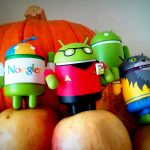
US Thanksgiving is a time for reflection on the year behind, with plenty of time to ponder resolutions for January 1st. Yesterday, I posted about the things Microsoft should be grateful for in 2012. Today, I followed up with another, for Google. For consistency's sake, the list numbers eight, in line with Microsoft's, for which I chose to hat-tip Windows 8.
The list is by no means comprehensive, just some things that stand ahead of others -- and it is organized from least to most important. Google had a great year, perhaps the best ever. Few companies released more innovative products, affecting so many people and building such positive brand awareness.
Custom recoveries available for Google Nexus 4, 10 with Android 4.2 support
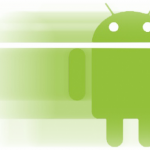
Custom recovery is at the core of Android modding by allowing users to root or load custom green droid distributions. The recently launched Nexus 4 and Nexus 10, running Android 4.2 Jelly Bean, can also join the modding train with new custom recoveries from ClockwordMod and Team Win Recovery Project.
With Android 4.2 Jelly Bean, Google introduced a new feature -- multiple-user support -- which modifies the internal storage structure by adding a "0" folder for the default user. Aside from the obvious benefit, the new functionality also causes issues with custom recoveries that are not designed to take it into account. Now though CWM 6.0.1.8/9 and TWRP 2.3.2.0 are available with support for the recently introduced Nexus 4, 10 and multiple user support.
Google is red face ahead of Black Friday

Some advice to Google: If you launch exciting new products right before the holidays, it's a good idea to have them to sell. Not only are new Nexus devices sold out, so are new Chromebooks. Worse, they're not available in stores that stock them. Ah, yeah, what a brilliant way to push a new product category to the masses: Look, but you can't buy.
The new $199 Acer and $249 Samsung Chromebooks are on display in 500 Best Buys, and Google staffs sales specialists, who are there during store hours and are contracted through the end of the year. But the search and information giant can't stock Chromebooks. Like Amazon and Google Play, the Samsung Chromebook is sold out (the new Acer model is still available from Google today but not yet stocked by Amazon). Units coming into Best Buy are generally already claimed from online orders. Even the few returns, available as open-box purchases, sell within a couple hours. Google pays sales staff to educate potential buyers, who leave stores empty-handed.
Android 4.2 hits AOSP, factory images available for Nexus devices

Android Open Source Project Technical Lead Jean-Baptiste Queru announced that Google is pushing the Android 4.2 source code to AOSP, after the company released the second Jelly Bean-branded operating system today. To complement Android 4.2 the Mountain View, Calif.-based corporation also uploaded the factory images for a number of Nexus devices.
The Android 4.2 source code will be available under the "android-4.2_r1" name, with the matching development branch named "jb-mr1-dev". Interestingly enough Queru says that the Nexus 10 is the best choice for AOSP work on the latest version of Android, which he considers the most open flagship device. But the Nexus 7 with 3G connectivity is not supported at the moment because of the GSM stack that is not yet licensed for the Android Open Source Project.
How to root Android 4.2
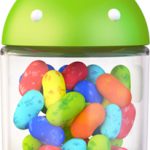
Today Google launches Android 4.2 alongside the new Nexus lineup. Galaxy Nexus as well as Nexus 7 owners that have the ability to run apps with elevated privileges are faced with a dilemma on whether to upgrade or not. Fear not, you can still root your Nexus using the latest version of Android.
The advantages of rooting are nothing to sneeze at. I run apps with elevated privileges more than a few times a day and I had to get the root capabilities up and running after upgrading to Android 4.2. The process is fairly straightforward and should not pose any difficulty even to less experienced users. I do have to mention that this guide can apply to the Nexus 4 and 10 as well, after developers release the compatible tools.
Getting started
Android 4.2 rolls out to Galaxy Nexus, update file available for Nexus 7

The wait is finally over! Google launches Android 4.2 Jelly Bean today alongside the new Nexus lineup with a treat in store for current Galaxy Nexus and Nexus 7 owners as well. The latest version of Android is rolling out over the air (OTA) for the year-old smartphone, with a manual update available for the ASUS-made tablet as well.
The Android 4.2 Jelly Bean OTA update, build number JOP40C, is available for the Galaxy Nexus HSPA+ sold via Google Play (codename "takju"). The point oner comes in at a rather small 74.3MB and, besides the announced improvements, at a first glance the update delivers a new baseband (I9250XXLH1 from the previous I9250XXLF1) and kernel (dated November 2) as well.
Google Play starts selling new Nexus 4, 7 and 10 devices

Today Google released Android 4.2 and new devices -- Nexus 4 and Nexus 10 -- running the software. The Nexuses (Should I say Nexi?) are available in Australia, Canada, France, Germany, Italy, Spain, United Kingdom and United States. Unconfirmed user reports on blogs and social networks claim sell-outs in Asia-Pacific and Europe. Sales in North America commence at 9 am PT, from Google Play, representatives confirm.
LG makes the 4.7-inch smartphone and Samsung the 10.1-inch tablet, which join the ASUS-manufactured Nexus 7. The cloud services company announced the new products on October 29.
I was wrong about Google Nexus tablet

In December 2011, I asserted: "Google Nexus tablet in six months is a year too late". The search and information giant proved me wrong. After failing to quickly respond to iPad and leaving Android leaderless, Google has recovered with a bang-up Nexus device strategy. Damn, this is my second tablet mea culpa -- the first about iPad nearly 18 months ago.
Tomorrow, Google expands the number of available Nexus screens to three, all running Android 4.2 Jelly Bean: 4.7-inch smartphone that replaces Galaxy Nexus as flagship; 7-inch tablet updated with more storage for purchase price and new 3G model added; 10.1-inch slate with higher screen resolution than iPad 4. The devices are "pure Google" and produced by LG, ASUS and Samsung, respectively. The original Nexus 7 released in July, receiving rave reviews and generating, ASUS asserts, about 1 million sales per month.
Which survives the drop test, iPad mini or Nexus 7?

To be honest, you really don't want to know which one. Some tragedies are simply too painful to see. But if you delight in car crashes, then do watch Darcy LaCouvee plummet the Apple and ASUS/Google tablets to the cement. Informal drop tests like this one aren't exactly scientific, if for no other reason than Chaos theory. But they're nevertheless revealing and entertaining.
Like the iPhone 5 vs Galaxy S III drop test, the Android Authority reporter waited until the Apple device starting selling in stores to drop-test the tablets. He's back again from Hong Kong, in this riveting 5:39 video.
Recent Headlines
Most Commented Stories
BetaNews, your source for breaking tech news, reviews, and in-depth reporting since 1998.
© 1998-2025 BetaNews, Inc. All Rights Reserved. About Us - Privacy Policy - Cookie Policy - Sitemap.